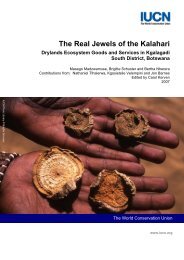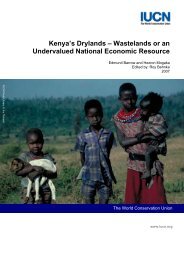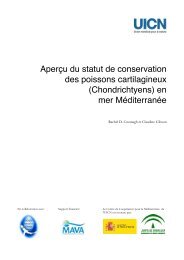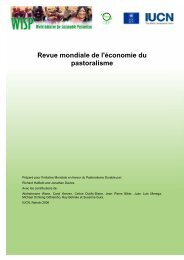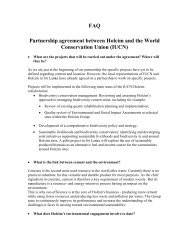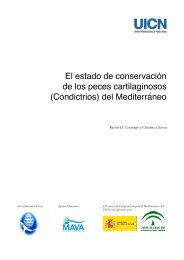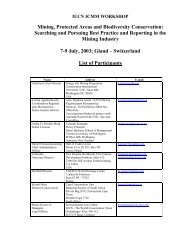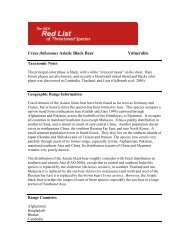iucn mediterranean sharks (pdf) - The Shark Trust
iucn mediterranean sharks (pdf) - The Shark Trust
iucn mediterranean sharks (pdf) - The Shark Trust
Create successful ePaper yourself
Turn your PDF publications into a flip-book with our unique Google optimized e-Paper software.
7. Chondrichthyan monitoringprogrammes in the MediterraneanLack of adequate scientific information is often cited as beingone of the reasons for failing to introduce or implementsuitable management measures for chondrichthyan fishes. Itis widely recognised, however, that the need for precautionarymanagement is urgent and should proceed based on whateverinformation is available. Several research and monitoringprogrammes have taken place and continue to operate in theMediterranean Sea that contribute knowledge, enabling effortsto develop shark conservation and management to progress.For example, the MEDLEM project (Mediterranean LargeElasmobranch Monitoring) collects data on incidentalcaptures, sightings and strandings of cartilaginous fishes inthe Mediterranean Sea. This project was initiated in 1985, andwas accepted by the FAO-GFCM Scientific AdvisoryCommittee meeting when presented in 2004 (GFCM 2004).It is anticipated that the GFCM will officially adopt the MEDLEMdatabase in the near future. See http://www.arpat.toscana.it/progetti/pr_medlem.html for more information.<strong>The</strong> Mediterranean International Bottom Trawl SurveyProject (MEDITS) was initiated in 1993, in response tothe difficulties of obtaining estimates of demersalresources from fishing activity, and to support theregulation of these heavily exploited demersal fisheries inthe Mediterranean. <strong>The</strong> aim of the MEDITS Project is toprovide standardised information on the status of theseresources within the Mediterranean region by carrying outa universal programme of repetitive trawl surveys. <strong>The</strong>objectives of the surveys are (i) to contribute to thecharacterization of bottom fisheries resources in theMediterranean in terms of population distribution (relativeabundance indices) as well as demographic structures(length distributions), and (ii) to provide data for modellingthe dynamics of the studied species (Baino et al. 2001;IOF 2006). See http://www.izor.hr/eng/international/medits.html for more information.<strong>The</strong> Italian national demersal survey programme GRUND(Gruppo Nazionale Risorse Demersali), initiated in 1982,covers the whole of the Italian coastline, which is divided into11 areas. Each area uses their typical trawl gear to carry outsurveys. <strong>The</strong>se are not identical but similar, as they all derivefrom the original commercial Italian trawl (Fiorentini et al.1999). See http://www.politicheagricole.gov.it/default.htmfor more information.Additional information on species biology and ecologycan be obtained from scientific research carried outthrough programmes such as tagging of migratory species.For example, the Med<strong>Shark</strong>s project uses techniques suchas photo-identification and tagging to carry out researchin the Mediterranean. Sandbar <strong>sharks</strong> Carcharhinusplumbeus have been the focus of Med<strong>Shark</strong>s researchsince 2001, and basking <strong>sharks</strong> are also being monitored.See http://www.med<strong>sharks</strong>.org/home_eng.htm formore information.25



